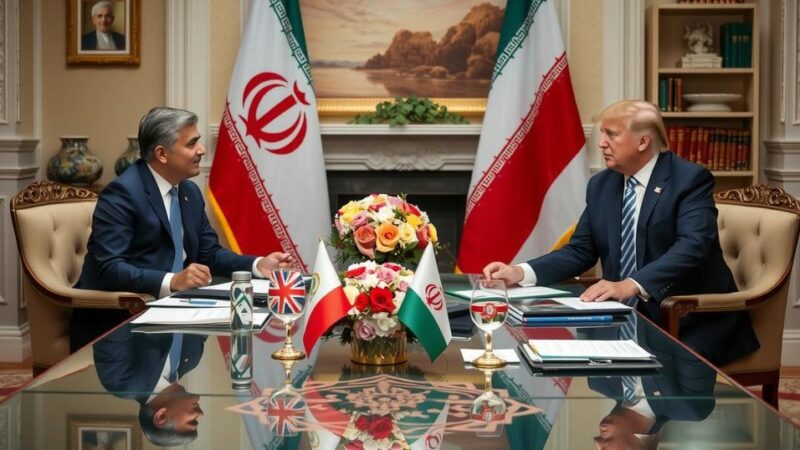Brazilian President Lula received Chinese President Xi Jinping in Brasilia, indicating enhanced bilateral ties. They signed 37 agreements across multiple sectors amid rising Chinese influence as Brazil’s largest export market. The visit follows a period of diplomatic strain under Bolsonaro, with Lula striving to repair relations. The implications for U.S.-Brazil relations, especially with Trump’s possible return to the presidency, are noteworthy.
On Wednesday, Brazilian President Luiz Inácio Lula da Silva warmly welcomed Chinese President Xi Jinping to the Alvorada Palace in Brasilia, underscoring the growing relationship between their nations. Following a period of tension under previous Brazilian President Jair Bolsonaro, the meeting marked a new chapter in Brazil-China relations, as both leaders signed 37 agreements across various sectors, including trade, tourism, agriculture, and technology. This visit signifies an important momentum, particularly as China increasingly replaces the United States as Brazil’s primary trading partner since 2009.
Experts observe that Latin America has historically received little attention from the United States and European Union, a gap that China is rapidly filling. Professor Flavia Loss emphasized, “Latin America has always been forgotten by the United States and the European Union. Who fills that void? China.” Furthermore, with Donald Trump’s potential return to the White House in 2025, the strengthening of China-Brazil ties may continue to intensify.
Past diplomatic strains included accusations from Bolsonaro’s administration against China regarding the COVID-19 pandemic and matters related to Huawei’s technology. In stark contrast, President Lula aims to repair these frayed relations to re-establish Brazil’s position on the global stage, emphasizing the significance of their collaboration at international forums such as the United Nations and BRICS. President Xi characterized China and Brazil as “reliable friends with a shared destiny.”
From January to October 2024, bilateral trade reached $136.3 billion, marking a significant increase since Lula’s initial visit to China in 2004, with exports to China surpassing those to both the United States and the European Union. It is noteworthy that while China has sought Brazil’s participation in its Belt and Road Initiative, Brazil has managed to negotiate beneficial agreements independently of joining the program. Pedro Brites, a China expert, remarked on the delicate balance Brazil must maintain to avoid damaging its connections with the United States and European countries, stating, “Brazil will maintain its rapprochement and bargain to a certain extent, but I think there will be a limit.”
The article discusses the state visit by Chinese President Xi Jinping to Brazil, reflecting a significant improvement in bilateral relations with Brazilian President Luiz Inácio Lula da Silva. This visit comes after a period of tension and isolation under the previous administration of Jair Bolsonaro, which had taken a critical stance toward China. The strengthening economic ties are illustrated through numerous agreements signed by the two leaders, showcasing a shared commitment to collaboration across various sectors amid shifting geopolitical dynamics. With Xi’s visit signaling a deepening partnership, the implications for Brazil’s international relationships, particularly as the U.S. prepares for a potential Trump presidency, are crucial for understanding the broader context.
In conclusion, the state visit of President Xi Jinping to Brazil represents a pivotal moment in the enhancement of Sino-Brazilian relations. With significant agreements reached and substantial trade numbers reflecting growing interdependence, both countries are poised to benefit from their partnership. As global political landscapes change, particularly with the potential return of Donald Trump to power, Brazil’s navigation of its foreign policy will be critical in balancing relations with both China and the United States, illustrating the complexities of modern diplomacy in a multi-polar world.
Original Source: www.livemint.com







